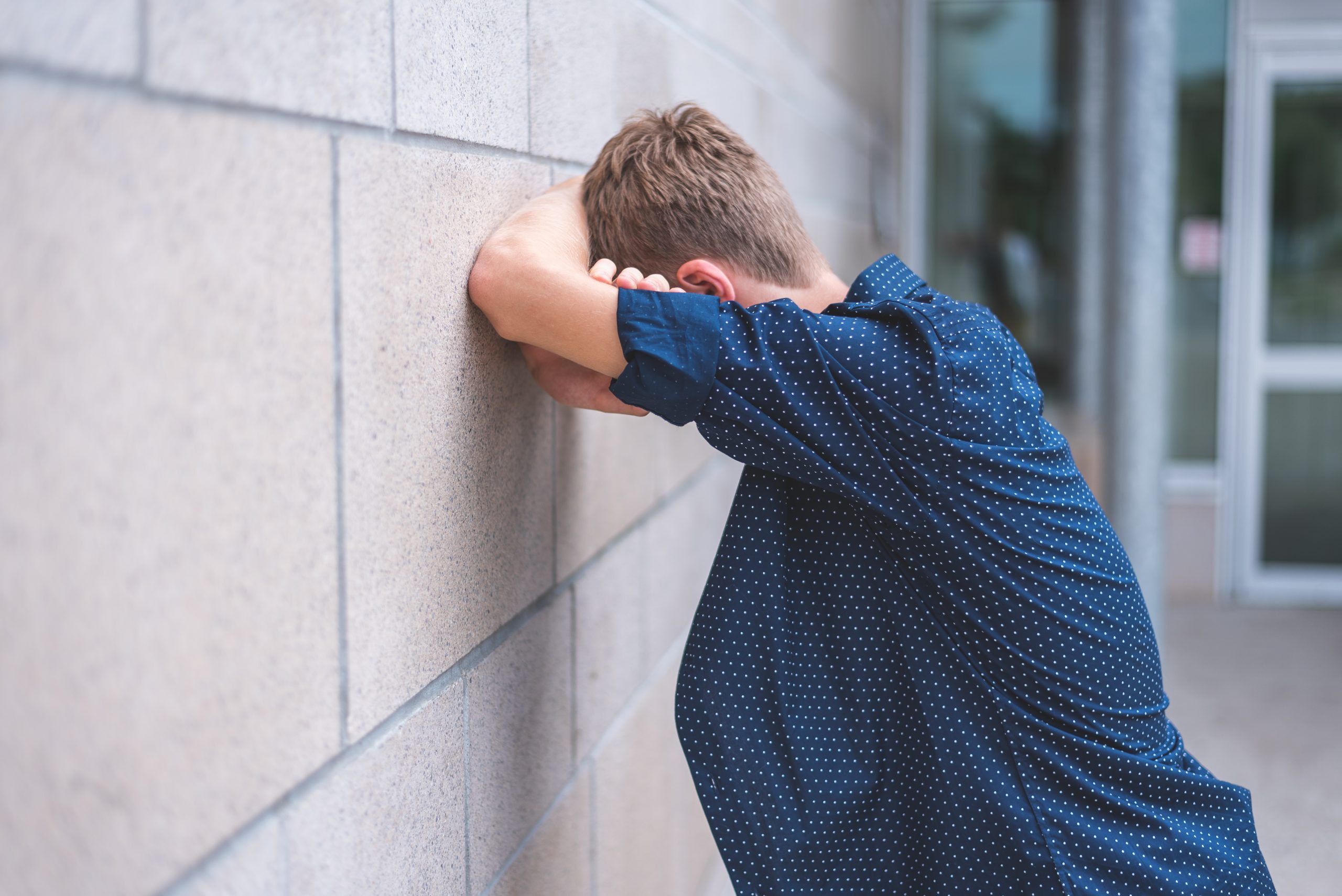
Many people will experience a traumatic event at some point in their lives. Unfortunately, trauma does not discriminate based on age, economic standing, or other demographics. Consequently, traumatic events can impact seniors, adults, children, and teens alike. A wide range of studies suggests as many as forty percent of children and teens under the age of eighteen will experience at least one traumatic event during their lifetime.
Many people who experience trauma or a traumatic event can recover or “bounce back” from their experiences after a short time. Usually, with a few days or a week, their emotions typically return to “normal.”. In some cases, depending on the event’s severity, it may take a few weeks or even a few months; but recovery still occurs. For others, moving on from the event is complex and takes far longer. These individuals struggle to cope with the event (or series of events), or the experience and the memory of the trauma impact their ability to “move on.” These individuals, including children and teens, are at a greater risk of developing post-traumatic stress disorder or PTSD.
When people hear the words post-traumatic stress disorder, they often think of soldiers returning from war, police officers who have been involved in a violent event, or those who see trauma daily as part of their employment obligations. While these are circumstances where post-traumatic stress disorder can develop, traumatic events cover a much broader field than just war, violent crime, or hospital emergency rooms. Traumatic events can also include physical violence, sexual abuse or violence, an accident, or natural disasters. Children and teens can either experience these events themselves, or they may have witnessed them happening to a loved one or someone else they know.
Symptoms and Causes of PTSD in Teens
Experiencing a traumatic event does not necessarily guarantee your teen will develop post-traumatic stress disorder. Whether a child or teen develops post-traumatic stress disorder due to their experience will depend on many factors. This includes the severity of the trauma, the frequency of the trauma, and how family members around them react to the event.
Common causes of PTSD in teens mimic PTSD in all other age groups. For example, natural disasters, abuse, loss of a loved one, accidents, crime, etc.
A child or teen experiencing post-traumatic stress disorder symptoms will feel as though they are unable to escape the impact of the trauma. As a result, they will avoid people or situations that remind them of the event or experience. In some cases, the child or teen will experience memories or “flashbacks” of the event, or they may experience dreams and nightmares that feel very, very real. Unfortunately for children and teens, these dreams, flashbacks, or similar situations feel like constant reminders of the trauma and can eventually make day-to-day functioning in life very challenging. This is especially true for very young children who may not adequately express what they are feeling or experiencing.
- Avoiding situations, places, or people that make or might make them recall the traumatic event
- Experiencing nightmares or flashbacks about the trauma which are described as very vivid or real
- Playing in a way that repeats or recalls the trauma
- Acting in an impulsive or aggressive manner
- Frequent or recurrent feelings of anxiety or anxiousness
- Experiencing or exhibiting emotional numbness
- Having trouble focusing at school
Teen-Focused Treatment for PTSD
Treatment for post-traumatic stress disorder varies from time to residential treatment options and many things in between. First, it is essential to remember that if your child or teen is exhibiting symptoms associated with post-traumatic stress disorder, there is a strong chance the symptoms will decrease and disappear over a few months. However, this does not negate the importance of consulting with a mental health professional. A mental health evaluation or consultation could provide an opportunity for someone to assess your child and determine the extent to which the trauma and symptoms they are experiencing. It will also allow you to discuss potential treatment options for their current symptoms or when symptoms potentially recur. Seeking treatment early on may also help ward off the onset of your child or teen partaking in risky behavior.
As previously noted, treatment for post-traumatic stress disorder comes in many different forms. Many of the most common treatments include various types of psychotherapy. These treatment “sessions” can take place either in an outpatient environment in a private office setting or a group setting, also in an outpatient environment. Psychotherapy treatment can also take place in an inpatient residential setting, which we will discuss more a little later in this article.
Cognitive Behavioral Therapy (CBT)
Cognitive-behavioral therapy is one of the most common forms of “talk therapy” and has consistently been the most effective treatment of post-traumatic stress disorder. The effectiveness of cognitive-behavioral therapy has been proven in both short and long-term treatment settings. Cognitive-behavioral therapy is used in a trauma-focused manner for individuals with post-traumatic stress disorder, which means the events specific to the trauma are the center of treatment. Additionally, the process focuses on helping to identify, understand, and finally, change maladaptive thinking and behavior patterns. Cognitive behavior therapy is an active form of treatment, which means the patient is highly involved and expected to engage both inside and outside of their standard “appointments.” Engagement means they are continuously learning and practicing the skills they learned during their appointments to help improve their symptoms and limit reoccurrence.
Cognitive-behavioral therapy is an umbrella term for different treatment components or procedures that fall into the behavioral restructuring category. Various types of cognitive-behavioral therapy have differing amounts of exposure and cognitive intervention. This is important because what works for one person may not work well for another. Cognitive-behavioral therapy for post-traumatic stress disorder generally includes specific interventions, some of which are listed below.
Exposure therapy
Exposure therapy helps people to face and control their fears by exposing them to the memories of the trauma they experienced in the context of a safe environment. Exposure can take the form of mental imagery, writing, or even visiting places or people that remind the person of their trauma. Regardless of the delivery method, the person is generally gradually exposed to the trauma to reduce sensitivity over time. This type of cognitive-behavioral therapy can be very intense and, in some cases, terrifying for the individual. Therefore the treatment must be conducted by a highly trained professional who understands post-traumatic stress disorder.
Cognitive restructuring
Cognitive restructuring is an intervention that helps people process and makes sense of their bad memories. It is not abnormal for someone to remember their trauma differently than how the actual event took place or to feel guilt and shame about aspects of their trauma that are not their fault. Cognitive restructuring helps people examine the event objectively and develop a realistic view of the trauma.
Cognitive processing therapy
Cognitive processing therapy is a form of cognitive-behavioral therapy that utilizes cognitive therapy to examine and change thoughts related to traumatic events. This form of therapy focuses on how people view themselves, others, and the world as a whole after experiencing trauma. It also focuses on learning skills to help determine whether one’s thoughts are supported by facts and more helpful ways to think about the trauma.
Other forms of cognitive-behavioral therapy that are used for teens and adults experiencing post-traumatic stress disorder symptoms include Eye Movement Desensitization and Reprocessing (EMDR), Stress Inoculation Training (SIT), and Present Centered Therapy (PCT). Play therapy can also be used for younger children who struggle to communicate their reactions and emotions related to the trauma. The “best” therapy model for your teen will depend on various factors. It is possible your teen and their treatment team may try one or more treatment models before finding the best fit for your teen’s treatment needs. Because everyone reacts to treatment differently, a certain amount of trial and error is sometimes required before the best treatment program can be established.
Medication
Unfortunately, there is no Food and Drug Administration-approved medication that “cures” post-traumatic stress disorder. However, for some teens (depending on their unique symptoms and any underlying mental health conditions), antidepressants and anti-anxiety medications can provide some symptom relief. Drugs are not commonly used independently but are used with regular therapy sessions.
The idea of seeking residential treatment for your teen can feel daunting and intimidating. However, a residential setting should not be looked at negatively. For some children and teens, outpatient treatment settings simply are not supportive enough for a full recovery to be possible. In a residential treatment center like Beachside, all outpatient treatment opportunities are available along with a highly trained team of doctors and medical professionals who have a complete and thorough understanding of how challenging the symptoms of post-traumatic stress disorder and the associated increase in risky behavior can be to treat. There is nothing worse than watching your child or teen suffer or struggle with trauma symptoms as a parent. This experience can make you feel powerless and unsure of where to begin in your search to get help for your child. At Beachside, we offer a robust support system that can help both you and your child on the path to recovery. Remember, above all, post-traumatic stress disorder is treatable, and with the right support system and treatment team, your child can move past their trauma and resume their entire active and healthy life.




